Let's talk American Staffordshire Terriers
The American Staffordshire Terrier likes having something to do. Often. When it comes to sniffing things out, they are a perceptive breed, able to quickly read people and situations. The American Staffordshire Terrier may look like a bruiser but underneath all that muscle is an adorable canine who is highly affectionate towards humans. When it comes to training your American Staffordshire Terrier, the earlier the better. A firm approach is required but the reward is a devoted and obedient companion—for life.
Official name: American Staffordshire Terrier
Other names: AmStaff, American Staff
Origins: United States
Tendencia a babear
{score 0 out of 5}Nivel de muda de pelo:
{score 0 out of 5}Nivel de energía
{score 0 out of 5}Compatibilidad con otras mascotas
{score 0 out of 5}¿Clima cálido?
{score 0 out of 5}Apto para vivir en departamento
{score 0 out of 5}¿Mascota familiar? *
{score 0 out of 5}Puede quedarse solo
{score 0 out of 5}
| Macho | Hembra |
|---|---|
| Altura | Altura |
| 46 - 48 | 44 - 46 |
| Peso | Peso |
| 25 - 32 | 18 - 25 |
| Adulto | |
|---|---|
| 1 - 7 years | |
| Madurez | Adulto mayor |
| 7–10 years | 10 years upwards |
| Bebé | Cachorro |
| Birth to 2 months | 2 to 12 months |
Tendencia a babear
{score 0 out of 5}Nivel de muda de pelo:
{score 0 out of 5}Nivel de energía
{score 0 out of 5}Compatibilidad con otras mascotas
{score 0 out of 5}¿Clima cálido?
{score 0 out of 5}Apto para vivir en departamento
{score 0 out of 5}¿Mascota familiar? *
{score 0 out of 5}Puede quedarse solo
{score 0 out of 5}
| Macho | Hembra |
|---|---|
| Altura | Altura |
| 46 - 48 | 44 - 46 |
| Peso | Peso |
| 25 - 32 | 18 - 25 |
| Adulto | |
|---|---|
| 1 - 7 years | |
| Madurez | Adulto mayor |
| 7–10 years | 10 years upwards |
| Bebé | Cachorro |
| Birth to 2 months | 2 to 12 months |

Get to know the American Staffordshire Terrier
All you need to know about the breed
It’s family first for the American Staffordshire Terrier, make no bones about it. Due to their muscular build and brawler roots, the breed is often assumed to be a fighter and not a lover. It is in fact the opposite. The American Staffordshire Terrier is highly affectionate and capable of forming a strong bond with their owners, including children—once they’ve had some training.
While he is happy to curl up with you on the sofa, make sure you’ve both had a workout first. Leaving them to run around the garden won’t cut it. The American Staffordshire Terrier requires plenty of interactive stimulation for healthy physical and psychological growth. They flourish with a self-assured owner who loves the great outdoors and takes a consistent approach to training. When starting out, carry a treat in your pocket to provide motivation. This should count as part of their daily calorie allowance. On the lazy side? Possibly not the breed for you. When outside, be sure to pop some doggy sunscreen on any sensitive areas, such as the white bridge of the nose, to prevent sun damage.
Farm dog, guard dog, police dog, war dog, TV star dog...is there anything the American Staffordshire Terrier can’t do? Their intelligence, coupled with a people-pleasing manner, means that with dedicated training, the American Staffordshire Terrier can take on many roles. Just make sure they are kept occupied with a task (or a person). If boredom sets in, they could take their teeth to the furniture and their paws and claws to your flower beds.
The affectionate temperament of the American Staffordshire Terrier has made them one of the most popular canine companions in the U.S.
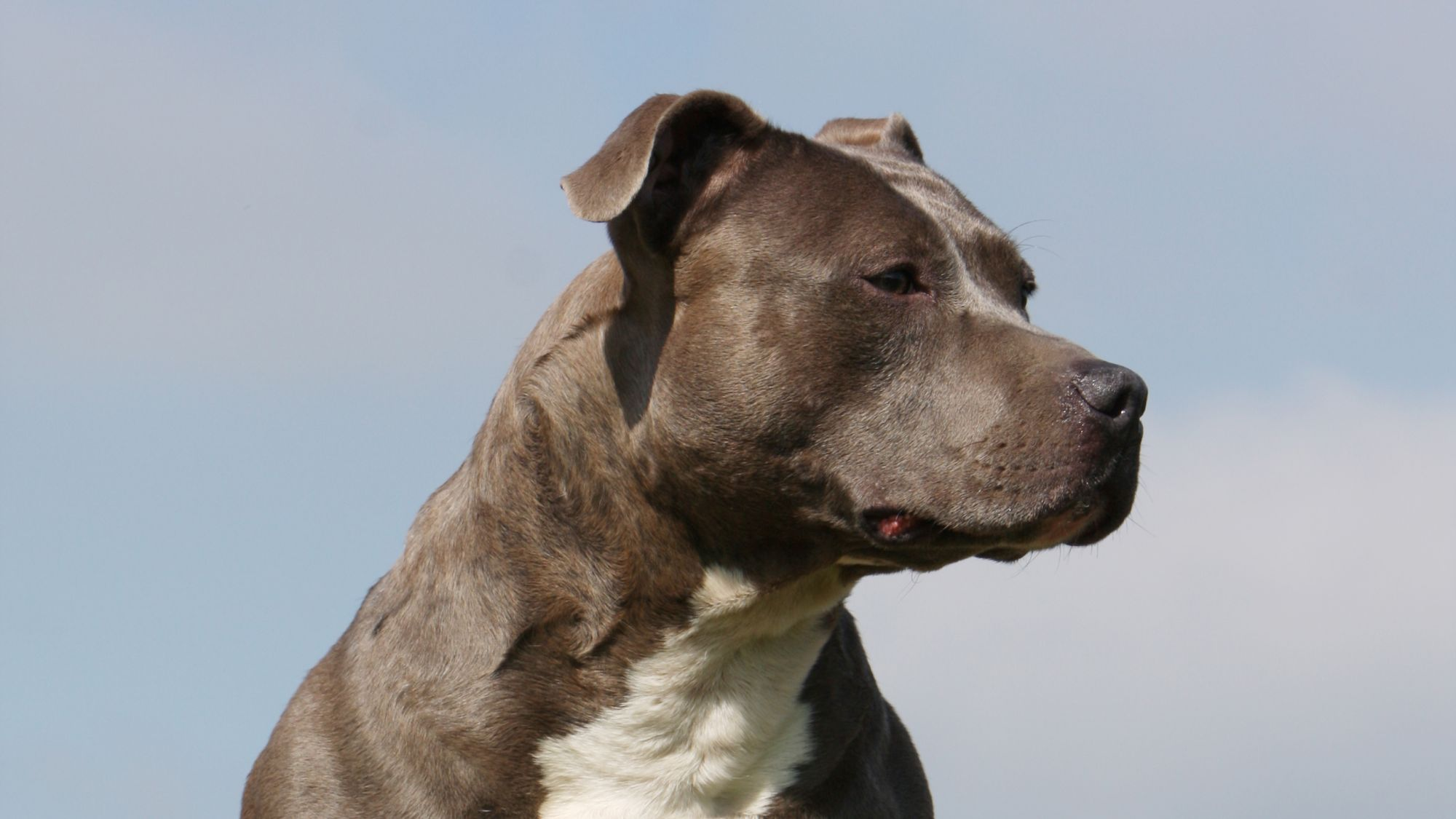
2 facts about Australian Silky Terriers
1. We can be heroes
Stubby was an American Staffordshire Terrier who earned the rank of sergeant. Yes, you read that correctly. This brave canine served in 17 battles during World War I, surviving two shrapnel hits, to become the most decorated dog of WWI. Sgt. Stubby is proof that anything is paws-ible.
2. A tight leash
The American Staffordshire Terrier is a people person. But how about with other canines? That’s a different story. They should always be kept on a leash as even the most well-trained American Staffordshire Terrier will go into protective mode when accosted. In certain parts of the country (or world) over-cautious types have deemed it necessary to put a muzzle on your American Staffordshire Terrier when out and about. Rules are rules.
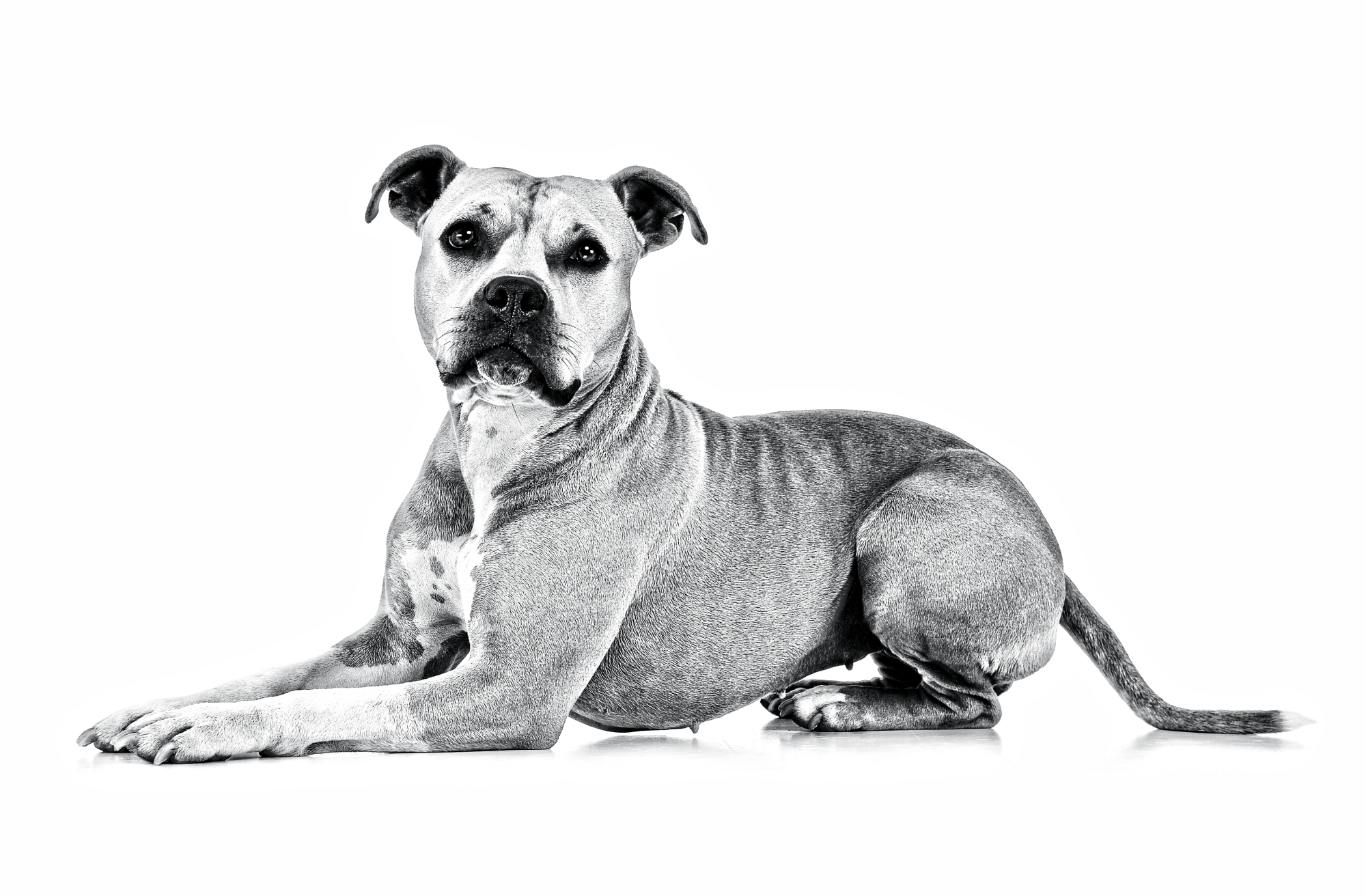
History of the breed
The American Staffordshire Terrier has English ancestry that can be traced back to the Bulldog. Because their ancestors were bred to fight, people can still make the mistake of associating the American Staffordshire Terrier with their gladiator past.
The breed’s most recent ancestor, the Staffordshire Bull Terrier, was introduced to the United States in the 1850s. By the start of the 20th century, the breed was officially recognized by the United Kennel Club (UKC) as American Pit Bull Terriers. In 1976, the AKC recognized the breed as the American Staffordshire Terrier as breeding had created a clear difference between the original Staffordshire Bull Terrier and its bigger American counterpart.
Today’s American Staffordshire Terrier is friendly and affectionate with people, obedient and responsive in regards to training, which makes them a lovable canine addition for active households who like to spend time outdoors.
From head to tail
Physical characteristics of American Staffordshire Terriers
1.Coat
2.Eyes
3.Head
4.Body
5.Tail
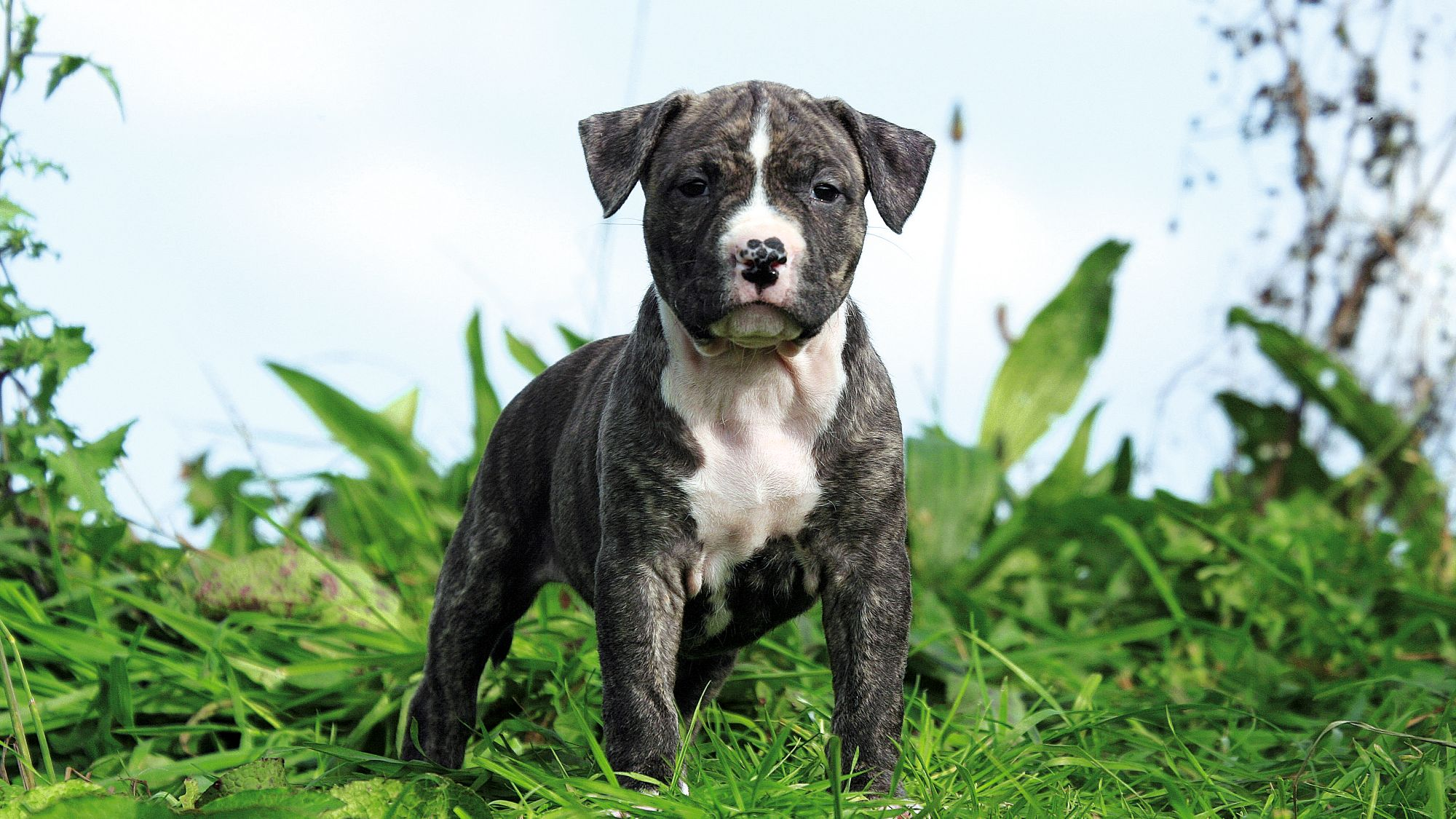
Things to look out for
From specific breed traits to a general health overview, here are some interesting facts about your American Staffordshire Terrier
Hip Hip (not so) Hooray
The American Staffordshire Terrier generally experiences few health problems and has an average life expectancy of between 12 and 16 years. However, do keep an eye out for hip dysplasia. Respected breeders will know to screen the American Staffordshire Terrier for this particular condition, which is a malformation of the hip joints. Talk it through with your vet so they can find the best solution and keep your American Staffordshire Terrier fit as a fiddle.
Happy to hit the “pause” button
While the American Staffordshire Terrier is a bundle of energy, with a strong appetite for spending time outdoors, they are also happy to relax with you at home. Enjoy the down time but don’t skip a workout, both physical and mental, to prevent your American Staffordshire Terrier from getting bored or gaining weight.
Healthy diet, healthier dog
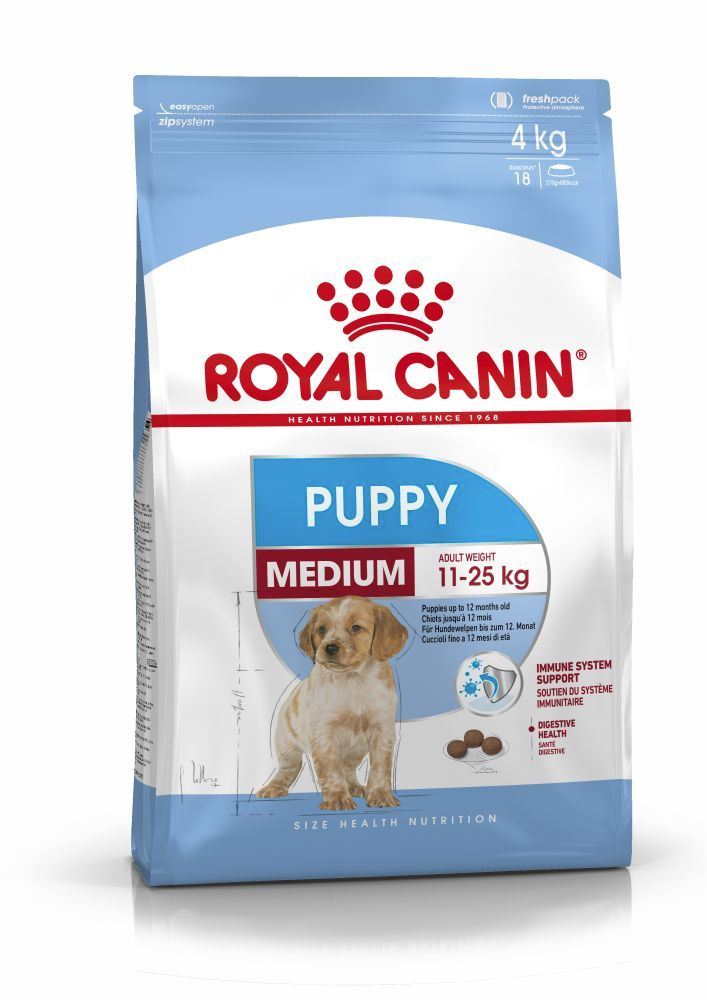
When choosing food for an American Staffordshire Terrier, there are many factors to consider: their age, lifestyle, activity level, physiological condition, and health including potential sickness or sensitivities. Food provides energy to cover a dog’s vital functions, and a complete nutritional formula should contain an adjusted balance of nutrients to avoid any deficiency or excess in their diet, both of which could have adverse effects on the dog.
Clean and fresh water should be available at all times to support good urinary regularity. In hot weather and especially when out exercising, bring water along and give your dog frequent water breaks.
Energy intake may also have to be adapted to the climatic conditions. A dog that lives outdoors in winter will have increased energy requirements.
The following recommendations are for healthy animals. If your dog has health problems, please consult your veterinarian who will prescribe an exclusively veterinary diet.
An American Staffordshire Terrier puppy’s requirements, in terms of energy, protein, minerals, and vitamins, are much greater than those of an adult dog. They need energy and nutrients to maintain their body, but also to grow and build it. Until they are 12 months old, an American Staffordshire Terrier puppy’s immune system develops gradually. A complex of antioxidants—including vitamin E—can help support their natural defenses during this time of big changes, discoveries, and new encounters. Their digestive functions are different from an adult American Staffordshire Terrier as well: their digestive system is not mature yet so it’s important to provide highly digestible proteins that will be effectively used. Prebiotics, such as fructo-oligosaccharides, support digestive health by helping balance the intestinal flora, resulting in good stool quality.
Similarly, a puppy’s teeth—starting with the milk teeth, or first teeth, then the permanent teeth—are an important factor that needs to be taken into account when choosing the size, shape, and texture of kibble. This short growth phase also means high energy needs, so the food must have a high energy content (expressed in Kcal/100g of food), while concentrations of all other nutrients will also be higher than normal in a specially formulated growth food. It is recommended to split the daily allowance into three meals until they are six months old, then to switch to two meals per day. s

The main nutritional goals for adult American Staffordshire Terriers are:
Maintaining an ideal body weight by using highly digestible ingredients and keeping the fat content at a sensible level
Promoting optimal digestibility with high quality protein and a balanced supply of dietary fibre
Helping to preserve the health and beauty of the skin and coat with the enriched addition of essential fatty acids (especially EPA-DHA), essential amino acids, and B vitamins.
To help support their natural defences, a formula enriched with an antioxidant complex and containing mannan-oligosaccharides is recommended.
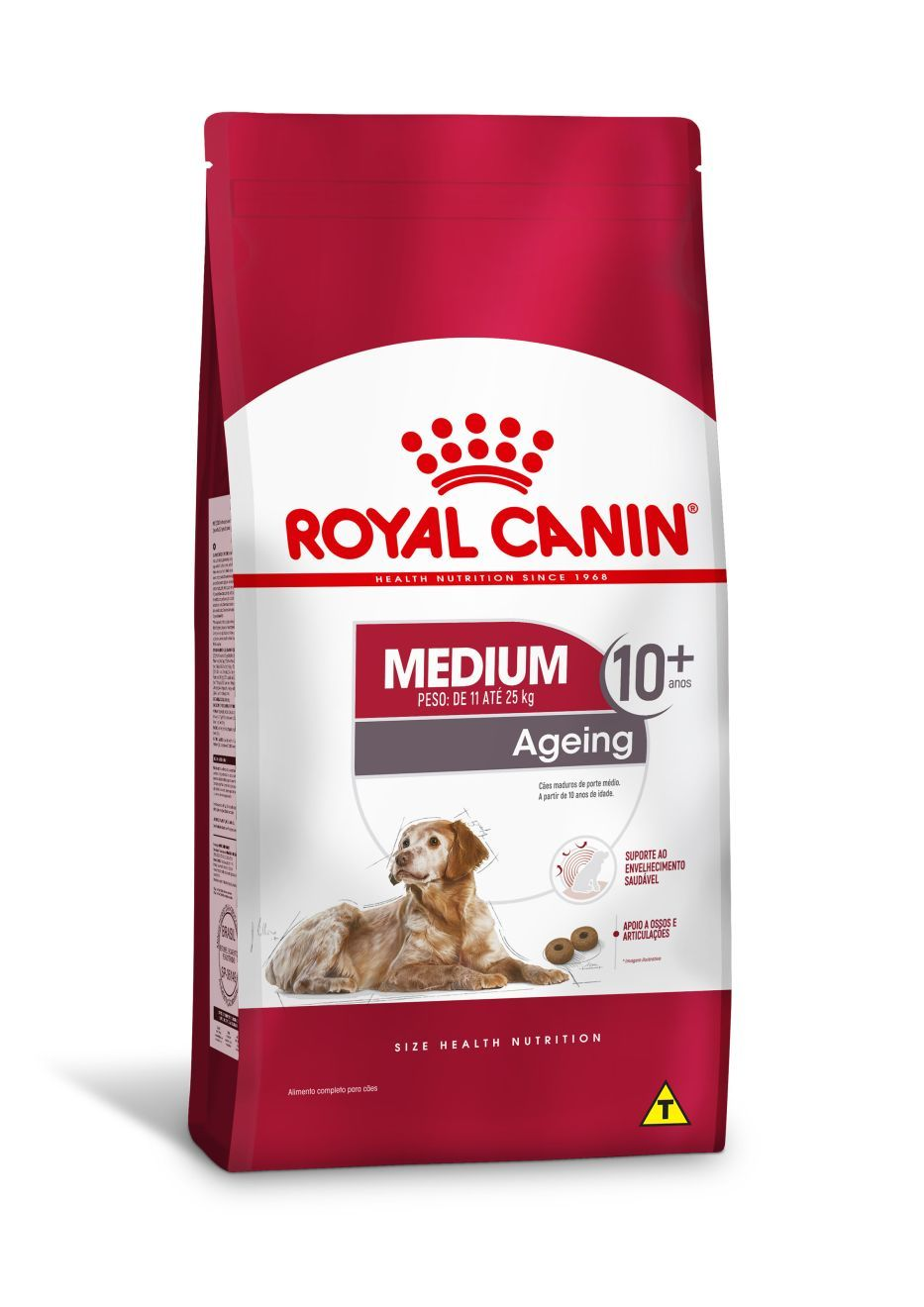
At around 7 years old, American Staffordshire Terriers start facing the first signs of aging. A formula enriched with antioxidants will help maintain their vitality, and specific nutrients, such as chondroitin and glucosamine, will help maintain healthy bones and joints. Aging is also accompanied by the modification of digestive capacities and particular nutritional requirements, so food for older American Staffordshire Terriers should have the following characteristics:
Higher vitamin C and E content. These nutrients have antioxidant properties, helping to protect the body’s cells against the harmful effects of the oxidative stress linked to aging.
High-quality protein. Contrary to a widely held misconception, lowering the protein content in food brings little benefit in limiting kidney failure. In addition, older dogs are less efficient at using dietary protein than younger dogs. Reducing the phosphorous content is a good way of slowing down the gradual deterioration of kidney function.
A higher proportion of the trace elements iron, zinc, and manganese to help keep the skin and coat in good condition.
A higher quantity of polyunsaturated fatty acids to help maintain the quality of the coat. Dogs can normally produce these fatty acids, but aging can affect this physiological process.
As they age, dogs are increasingly prone to teeth problems. To ensure they continue to eat in sufficient quantities, the shape, size and hardness of their kibble needs to be tailored to their jaw.
Throughout their life, it is important to avoid feeding American Staffordshire Terriers human foods or fatty snacks. Instead, reward them with kibble taken from their daily meal allowance, and strictly follow the feeding guidelines written on the package in order to prevent excessive weight gain.
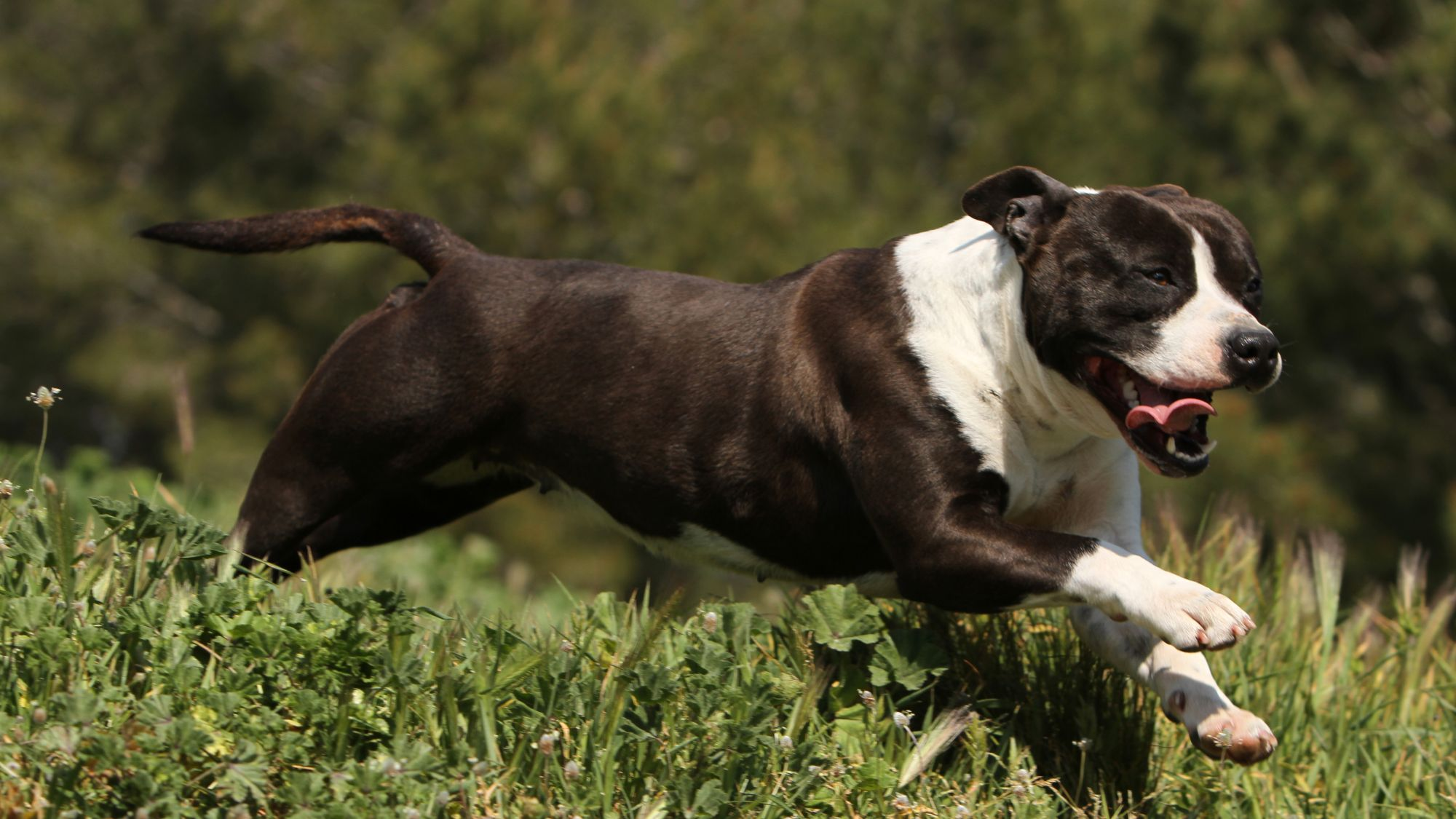
Caring for your American Staffordshire Terrier
Grooming, training, and exercise tips
7/7
All about American Staffordshire Terriers
The American Staffordshire Terrier is an affectionate dog, capable of being very devoted to their owner. Once trained, you can even add “great with children” to their resumé, which makes the breed a welcome addition to a pet-free household. Teaching the American Staffordshire Terrier good social skills from when they are a puppy will result in an even-tempered companion who sticks to you like glue and never refuses an opportunity to cuddle.
The easy-going temperament of the American Staffordshire Terrier means that they don’t tend to bark much. There is one exception however: the American Staffordshire Terrier will bark if they are bored. Keep them occupied with exercise, throw them a chew toy, or take them with you to run errands, and the problem is easily resolved. Your neighbors will also be happy.
Suggested Breeds
Read more on this topic
Sources
- Veterinary Centers of America https://vcahospitals.com/;
- Royal Canin Dog Encyclopaedia. Ed 2010 and 2020
- Banfield Pet Hospital https://www.banfield.com/
- Royal Canin BHN Product Book
- American Kennel Club https://www.akc.org/
Like & share this page